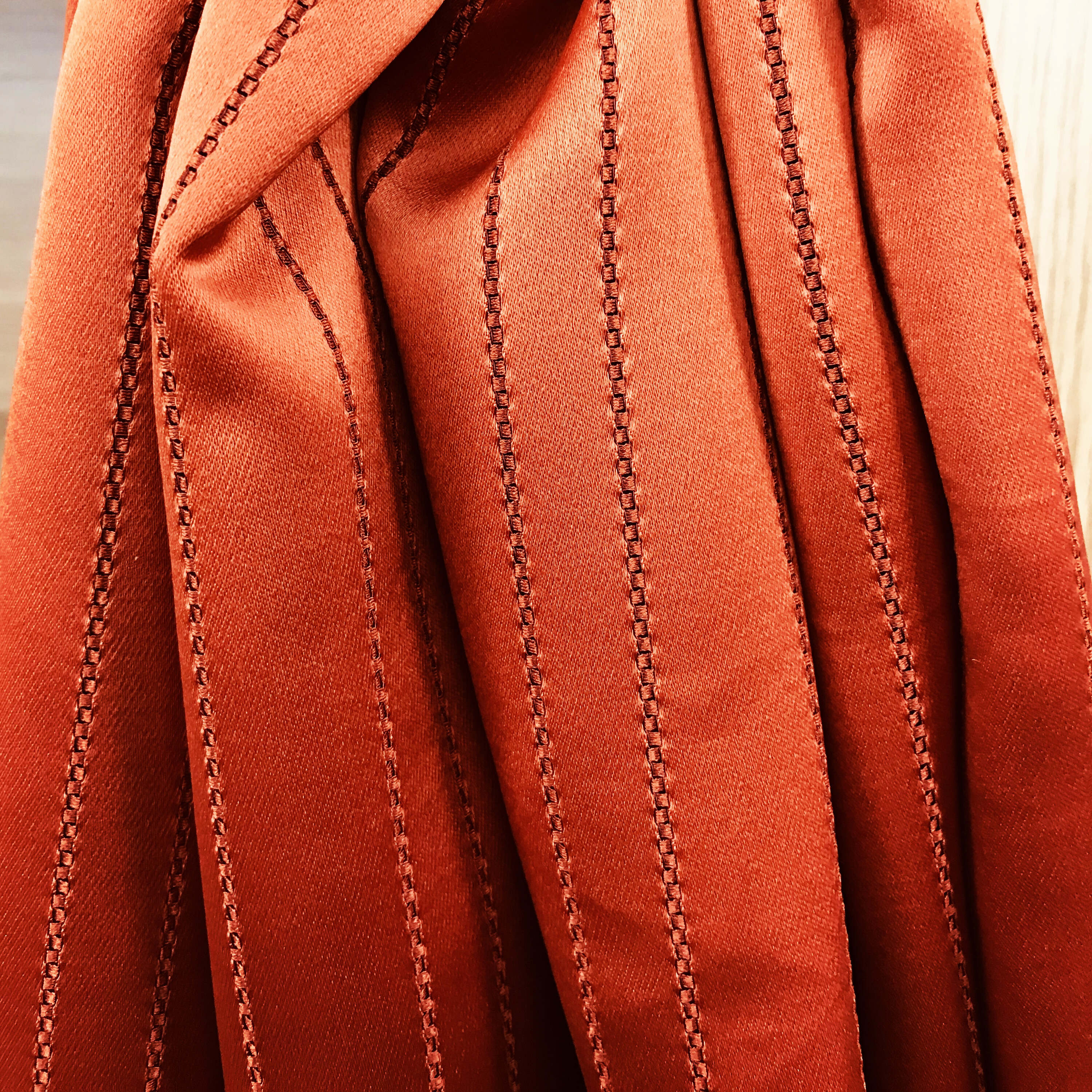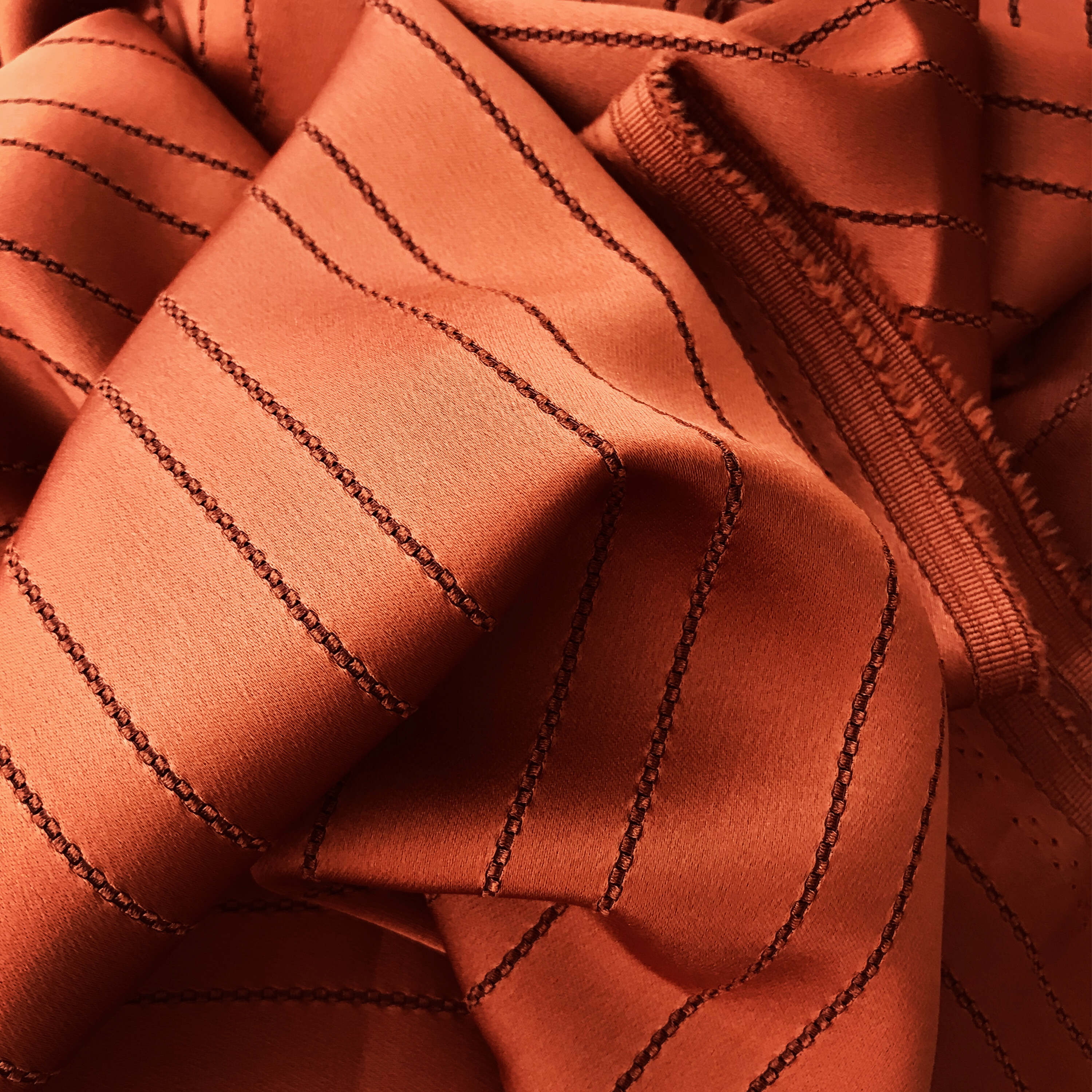

Acetate fabric is a semi-synthetic material renowned for its silk-like appearance, lightweight feel, and versatility. Among global suppliers, acetate fabric from China has emerged as a top choice for designers, manufacturers, and fashion brands. But what makes this textile so special, and why is China a leading producer? In this comprehensive guide, we’ll explore the unique qualities of acetate fabric, its industrial applications, and how Chinese manufacturers are shaping its global demand.
Acetate fabric from China stands out due to its blend of affordability, quality, and innovation. Derived from wood pulp and acetic acid, this material mimics the luxurious texture of silk while offering superior drape and color retention. Chinese manufacturers leverage advanced production techniques to create acetate fabrics that meet international standards for durability and aesthetics.
Key advantages include:
● Cost-effectiveness: Lower labor and production costs in China make acetate fabric competitively priced.
● Customization: Suppliers offer tailored solutions in texture, weight, and dyeing.
● Sustainability: Many Chinese factories prioritize eco-friendly practices, such as using recycled materials.
China’s dominance in acetate fabric production is rooted in its streamlined manufacturing processes. Here’s a breakdown:
Chinese suppliers source high-quality wood pulp (often from fast-growing trees like eucalyptus) and acetic acid. This ensures the base material is both sustainable and consistent.
The cellulose from wood pulp is treated with acetic acid to form cellulose acetate flakes. These flakes are dissolved into a liquid, extruded through spinnerets, and spun into fibers.
The fibers are woven into fabric using advanced looms. Chinese factories employ techniques like satin weaving to enhance the fabric’s sheen and softness.
Why choose acetate fabric from China? The country’s integration of automation and skilled craftsmanship ensures precision at every stage, resulting in fabrics that rival European or American counterparts.
It is a favorite across industries due to its adaptability. Let’s explore its most popular uses:
From flowing evening gowns to linings for suits, acetate fabric provides a luxurious finish without the high cost of silk. Designers appreciate its ability to hold vibrant dyes, making it ideal for prints and patterns.
Chinese-made acetate fabrics are used in curtains, upholstery, and decorative pillows. Their resistance to mildew and moisture makes them suitable for humid environments.
Scarves, ties, and handbags often feature acetate fabric for its glossy finish and lightweight comfort.
In industries like healthcare, acetate is used for disposable garments due to its hypoallergenic properties.
Here’s why global buyers turn to acetate fabric from China:
Chinese factories can handle bulk orders with short lead times, catering to startups and multinational brands alike.
Reputable suppliers adhere to certifications like OEKO-TEX and ISO, ensuring safety and consistency.
China invests heavily in R&D, creating flame-retardant, UV-resistant, and biodegradable acetate fabrics.
Environmental concerns are reshaping the textile industry, and it is no exception. Many Chinese suppliers now:
● Use closed-loop systems to recycle water and chemicals.
● Source wood pulp from sustainably managed forests.
● Develop biodegradable acetate blends to reduce landfill waste.
Case Study: A leading Zhejiang-based factory reduced carbon emissions by 30% through solar-powered manufacturing.
Not all suppliers are created equal. Follow these steps to find reliable partners:
Look for ISO 9001, OEKO-TEX, or GOTS certifications to ensure ethical and quality standards.
Test fabric samples for colorfastness, tensile strength, and texture.
Choose suppliers with responsive English-speaking teams to avoid misunderstandings.
Platforms like Alibaba and Global Sources provide insights into supplier reliability.
Pro Tip: Attend trade shows like the Canton Fair to meet suppliers face-to-face.
The global acetate fabric market is projected to grow at 4.5% CAGR by 2030, with acetate fabric from China driving much of this expansion. Emerging trends include:
● Smart Textiles: Integration of conductive fibers for wearable tech.
● Circular Fashion: Increased recycling of acetate waste into new fabrics.
● Custom Digital Printing: AI-driven designs tailored to regional preferences.

Whether you’re a fashion designer, retailer, or sustainability advocate, acetate fabric from China offers unmatched value. Its blend of elegance, durability, and eco-friendliness—coupled with China’s manufacturing prowess—makes it a cornerstone of modern textiles. By partnering with certified suppliers, you can tap into this dynamic market and stay ahead in a competitive industry.
Call to Action: Ready to source premium acetate fabric from China? Contact us for a curated list of vetted suppliers and exclusive discounts!
Email format error
Email cannot be empty
Email already exists
6-20 characters(letters plus numbers only)
The password is inconsistent
Email format error
Email cannot be empty
Email does not exist
6-20 characters(letters plus numbers only)
The password is inconsistent